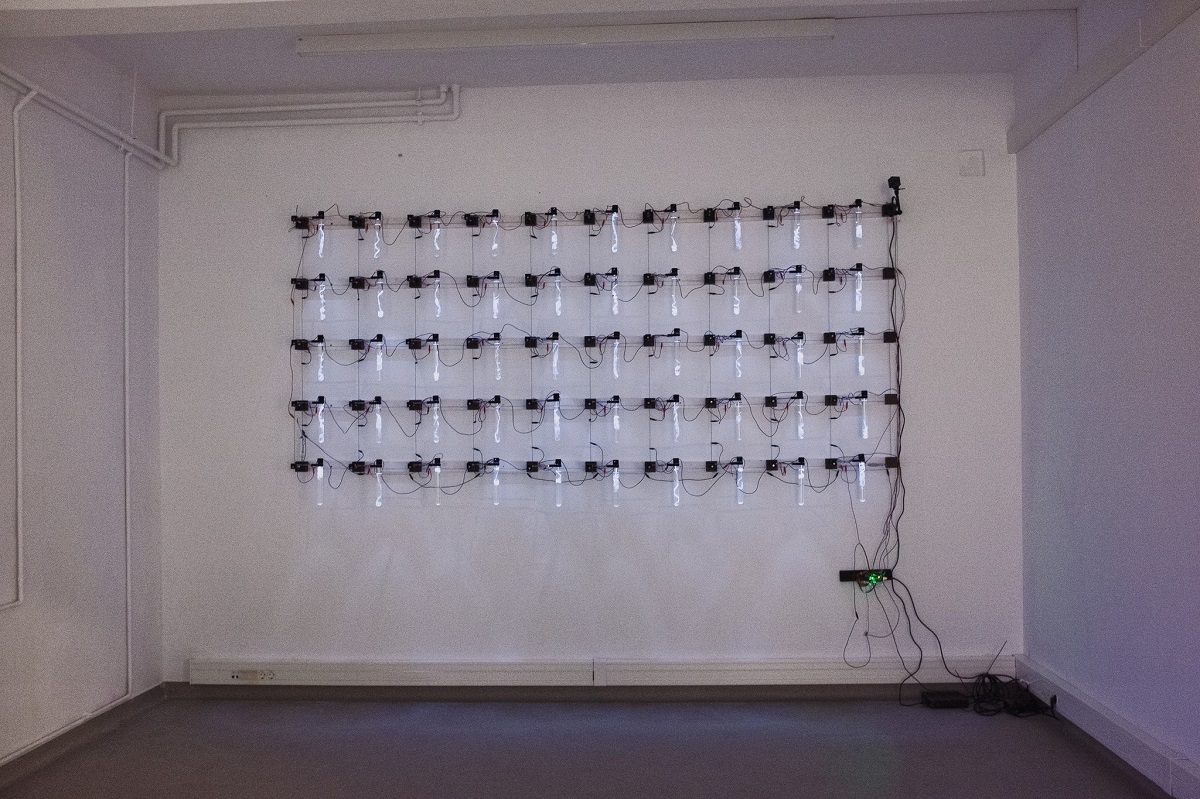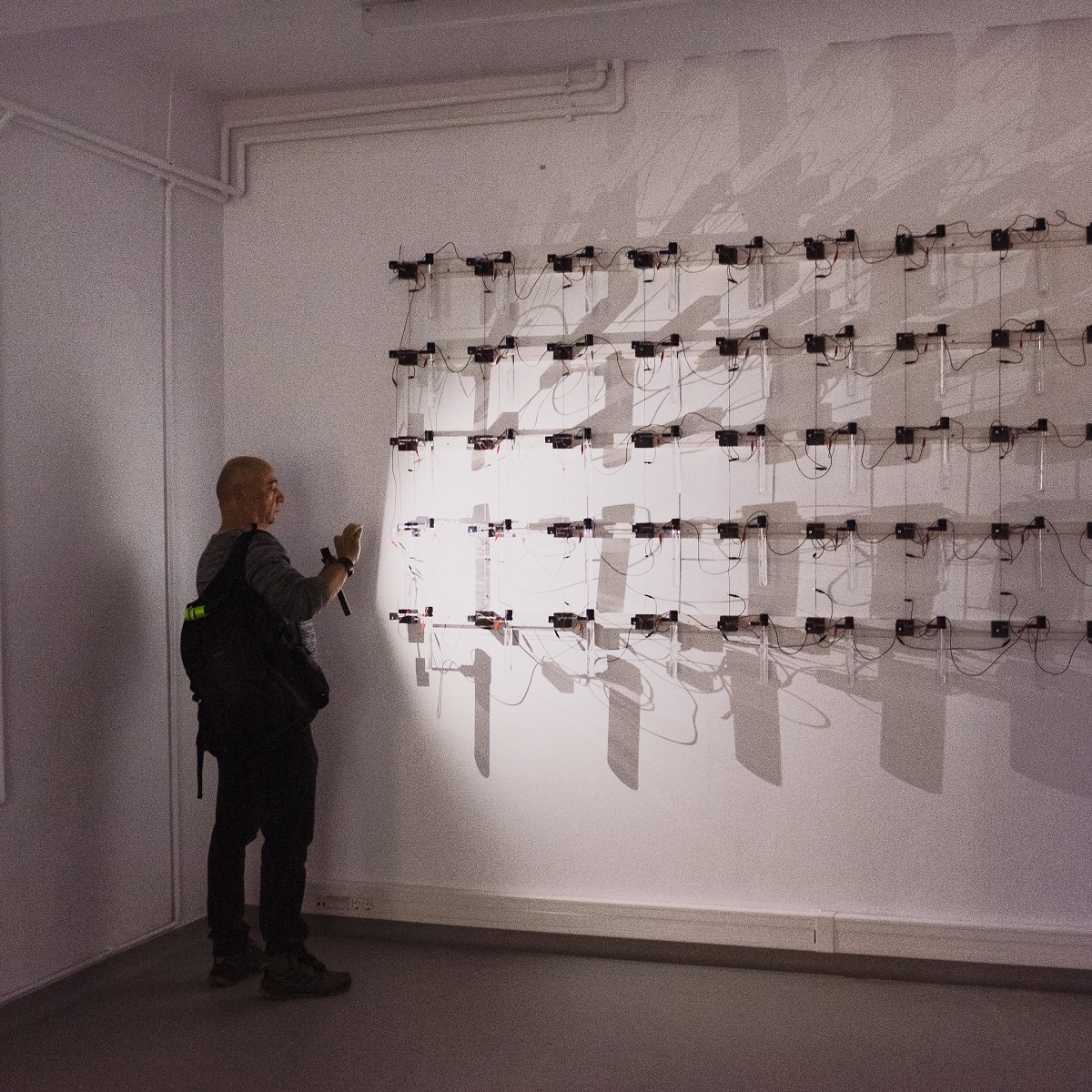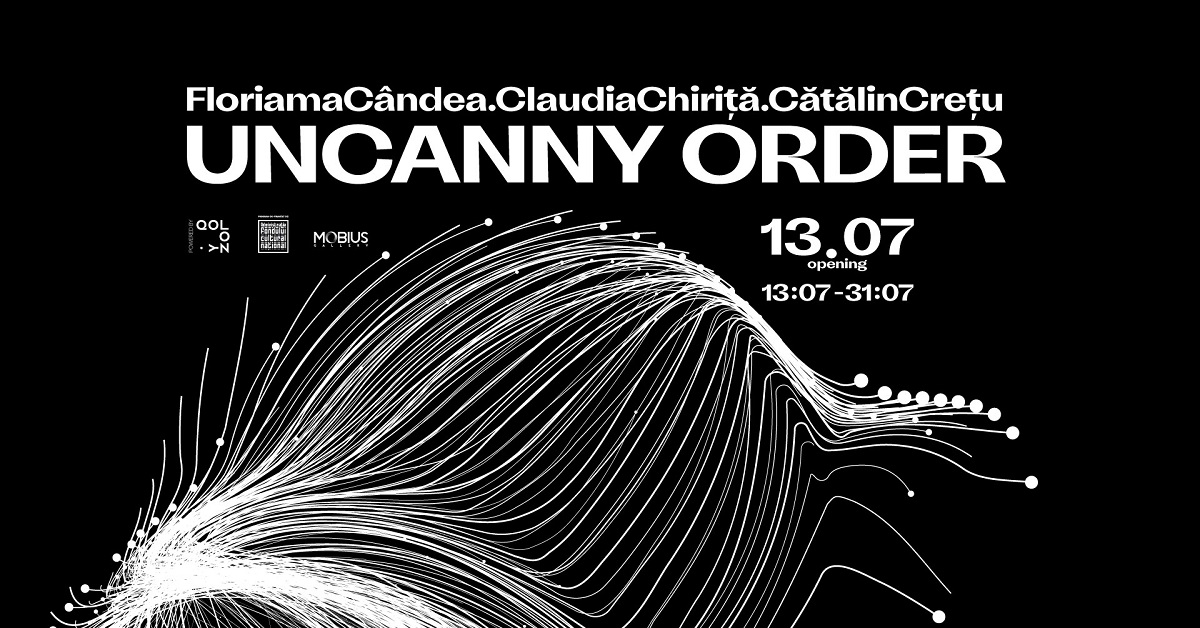After a first contact with the public in June in Timișoara, Uncanny Order, the newest research and artistic production project developed by the Qolony Association, will arrive in Bucharest, at the MOBIUS Gallery (Str. Piața Amzei no. 13).
The opening of the interactive installations, which will allow participants to witness the emergence of patterns and explore the complex dynamics of chaos, will take place on July 13, at 7 p.m.
The approach had as its starting point the frequent superficial and often erroneous takeover in art (but also in other cultural areas) of some concepts and ideas from the world of science – for example, chaos theory is known to the general public rather through the allegory of the butterfly effect ).
Beyond this accessible popularization, Uncanny Order aims to explain and exemplify, if only in an informal way, the definition of a nonlinear dynamical system and the strange order that spontaneously emerges and which we call synchronicity, which frequently remain alien most people.
Whether we are talking about populations of insects pulsing visually or sonically in unison, trillions of atoms emitting photons at the same frequency, cardiac cells in our hearts, or group social behaviors, chaos, although often described as “random”, yet it obeys strict mathematical rules, derived from equations, and nature seems to have a tendency towards this order.
The attempt to clarify chaos theory for the general public is a secondary objective in the project, while the main goal was to create installations that use mathematical models from chaos theory as new tools for artistic discourse, with the intention that they bring into discussion some current themes (from the fragility of nature to social collaborations and attitudes towards cultural heritage from other eras).
Starting from synchronicity, the sub-theme assumed by Uncanny Order, these installations are based on the mathematical modeling of ordering phenomena: the synchronization of the light of fireflies, applause and some laser emissions – natural, social, or synthetic, laboratory phenomena.
The works created by the team of artists formed by Floriama Cândea, Claudia Chiriță, and Cătălin Crețu, together with the programmer Cristian Bălaș and the researchers Marian Zamfirescu and Ionuț Andrei Relu, open the discussion not only about the conditions in which synchronization happens and is maintained, but also about the role of the viewer in these contexts: both as a disruptive factor, but also as a facilitator or executor of synchronization.
The installations have in common various aesthetic elements from the visual and sound spheres: the repetition of some geometric shapes, the chromatics, and the harmonization of the audio signals emitted by the works.
Visitors will be given the necessary guidance to interact with the installations and, through their presence and interaction with them, the public will become an active part in causing disruptions to the initial conditions, causing changes in the behavior of the artworks, allowing them to follow unexpected and unpredictable paths: kinetic sculptures based on the intelligence of a hybrid swarm of fireflies, rhythmic applause whose synchronization triggers visual reactions, music composed with the help of the chaotic behavior of the emission of laser systems, these are some of the directions of artistic research that the team proposes.
“We hope that visitors will think for a moment more about the role they play in various types of interaction – interhuman, with nature, or with technology. We hope they also question the reasons for some seemingly unexpected orderings or unexpected synchronicities in everyday life. Sometimes they are not just coincidences. We also hope to encourage audiences to think critically and investigate, as much as possible, the science behind butterfly effect stories/allegories/hyperboles they encounter in various cultural settings, including art galleries. Not everything that flaps its wings is eaten.” – says Claudia Chiriță.
The exhibition will be open to visitors between 14 and 31 July, from Wednesday to Saturday, between 5-7 p.m.











